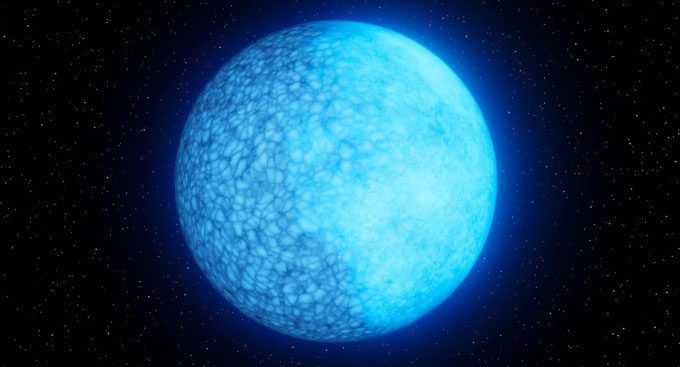Astronomers Discover a Strange Star with Two Distinct Faces, Each Composed of Different Elements.

Simulation of the white dwarf Janus. (Photo: K. Miller, Caltech/IPAC).
A white dwarf is the remnant left after stars similar to the Sun shed their outer layers, leaving behind a solid core. Their atmospheres usually consist of hydrogen or helium, with the primary element typically being over 1,000 times more abundant than others. However, in a study published on July 19 in the journal Nature, astronomers discovered a white dwarf that does not fit this description, and the reason for its uniqueness remains a mystery. One side of the star contains only hydrogen, while the other side contains helium, marking the first recorded instance of a celestial object with such a clear division. The research team named it Janus after a Roman god.
“The surface of the white dwarf changes completely from one side to the other”, said Ilaria Caiazzo, the lead researcher. “When I showed the observational results to others, they were absolutely astonished.”
Janus was discovered using the Zwicky Transient Facility (ZTF), an observatory designed to monitor objects that change brightness in the night sky. The research team noted that the brightness of this white dwarf varied as it rotated. Further observations with a spectrometer, a device that analyzes light to reveal its constituent elements, indicated a significant difference in composition corresponding to the changes in brightness.
The researchers have several theories about the process that may have led to the strange star having two distinct faces. Some white dwarfs are thought to transition between hydrogen-rich or helium-rich states during their lifetime, and Janus may be one of those. However, even so, Caiazzo and her colleagues still do not understand why it only changes one side at a time. The cause could be the strong magnetic field of the object. If the magnetic field is stronger on one side compared to the other, it could prevent hydrogen and helium from mixing on that side, resulting in a higher proportion of hydrogen. The research team does not rule out the possibility that the magnetic field alters the pressure and density of the gases.
“The magnetic field could lead to lower gas pressure in the atmosphere, facilitating the formation of a hydrogen ocean where the magnetic field is strongest”, explained James Fuller, a co-author of the study. “We don’t know which of these hypotheses is correct, but we can’t think of any other way to explain the distinct two faces without considering the magnetic field.”


















































